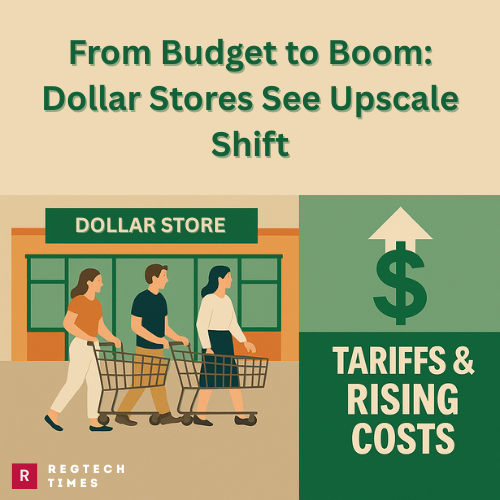In a surprising turn of events, dollar stores—shops known for serving mostly low-income shoppers—are now seeing more visits from wealthier Americans. This change comes as rising tariffs, or taxes on imported goods, make shopping more expensive across the country. These tariffs have made many people nervous about prices going up and their future income. As a result, even middle- and high-income families are turning to dollar stores to save money.
More Affluent Shoppers Enter Dollar Stores
Two of the biggest dollar store chains, Dollar Tree and Dollar General, recently shared that they are getting more customers from richer households. Mike Creedon, CEO of Dollar Tree, said that 2.6 million new shoppers visited its stores in the first few months of the year. Most of these new customers come from households making more than $100,000 a year.
Todd Vasos, CEO of Dollar General, which operates over 20,000 stores, also noticed this trend. While many of its usual customers still have tight budgets, the store is seeing a rise in shoppers who have more money to spend. Nearly 60% of its core customers said they expect to cut back on some basic needs soon because of money worries, but the store’s overall customer base is growing with people trading in from higher income groups.
This shift shows that dollar stores are no longer just places for the poorest shoppers. Instead, families across different income levels are now shopping there, likely because they want to avoid higher prices elsewhere.
Japan Draws a Red Line: No U.S. Trade Deal Without Full Tariff Rollback, Says Economy Minister
Tariffs and Rising Costs Affect Shopping Habits
The rising number of wealthier shoppers at dollar stores is linked to new tariffs introduced by the government. Tariffs are taxes on goods that come from other countries, and they make many everyday products more expensive. Retailers have felt the impact of these tariffs, and many are passing the higher costs on to customers.
Consumers are feeling the pressure. Surveys show that many Americans are worried about prices rising and their future ability to earn money. These concerns have caused people to change their shopping habits. Instead of spending freely, many are looking for cheaper places to buy necessities.
Even big retailers known for low prices, like Walmart, have warned that tariffs are forcing them to raise their prices. Walmart said it still had sales growth across different income groups but admitted price increases are coming. Another retailer, Target, which usually serves shoppers with higher incomes, reported a drop in sales partly because customers are feeling uneasy about tariffs and the economy.
Currency Coup! Ukraine Prepares to Divorce the Dollar for Euro
This economic climate has helped dollar stores attract a wider range of shoppers. Dollar Tree, for example, has been offering more variety in its products, with many items priced above their usual $1.25 limit. This move appeals to customers looking for affordable but slightly better or different goods than the standard dollar items.
Financial Results Show Changing Customer Base
The financial reports from Dollar Tree and Dollar General highlight these changes clearly. Dollar Tree warned that tariffs would add about $200 million in extra costs this year, which is about 1% of its expected sales. Because of these costs, Mike Creedon said their profits in the next quarter could fall by as much as half. Despite this, Dollar Tree’s sales and profits in the first quarter were strong. Their sales went up by 11.3% to $4.6 billion, and profits increased by 14.4% to over $343 million. Same-store sales—sales in stores open at least a year—rose by 5.4%.
Todd Vasos said Dollar General also had solid numbers. The company reported net sales of $10.4 billion and net profits of nearly $392 million in the first quarter. Same-store sales increased by 2.4%, beating expectations.
These numbers show that even though tariffs and other challenges are making business harder, dollar stores are benefiting from new customers who are looking to save money during uncertain times.


